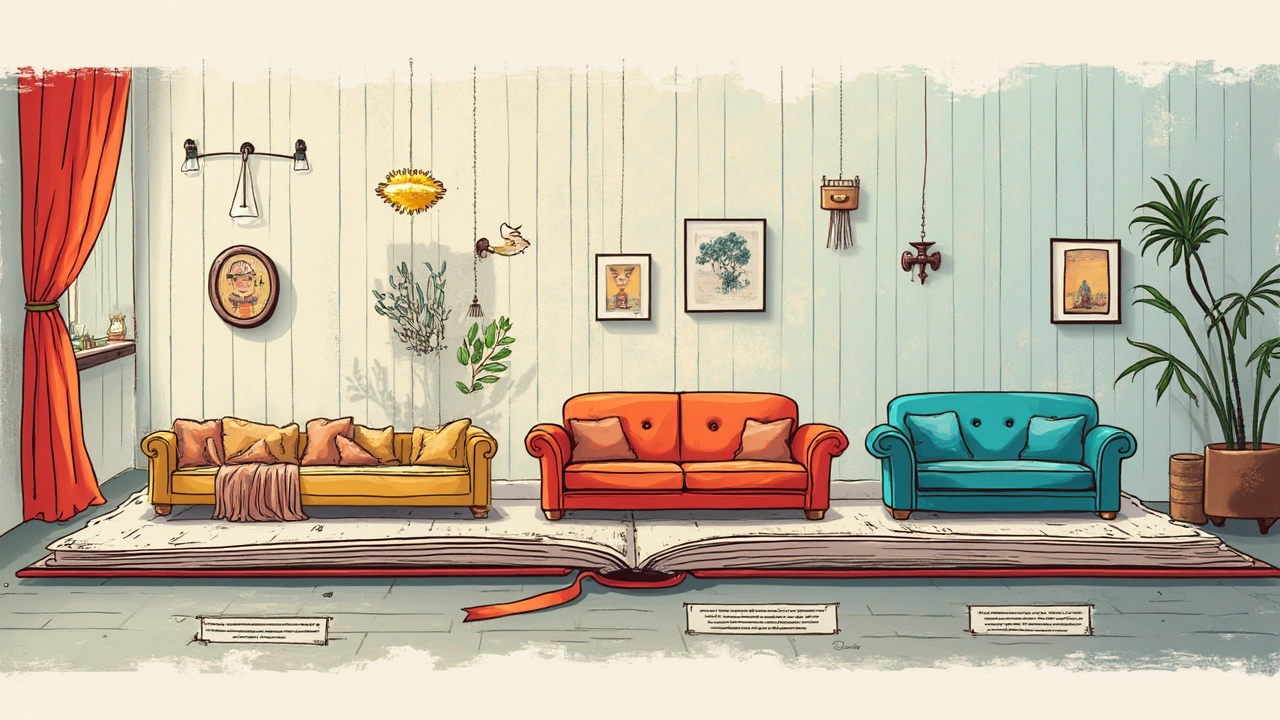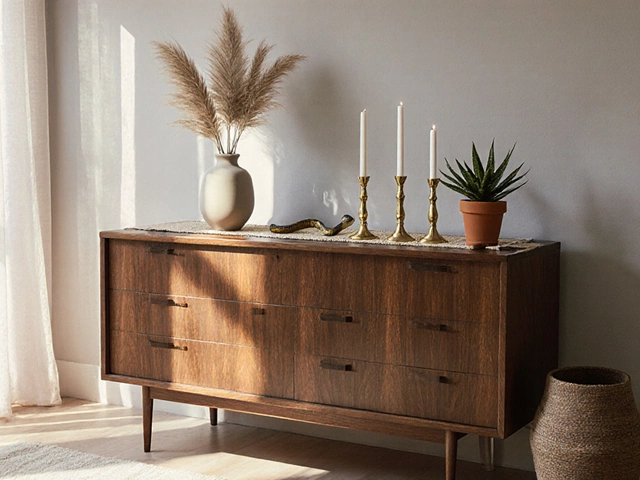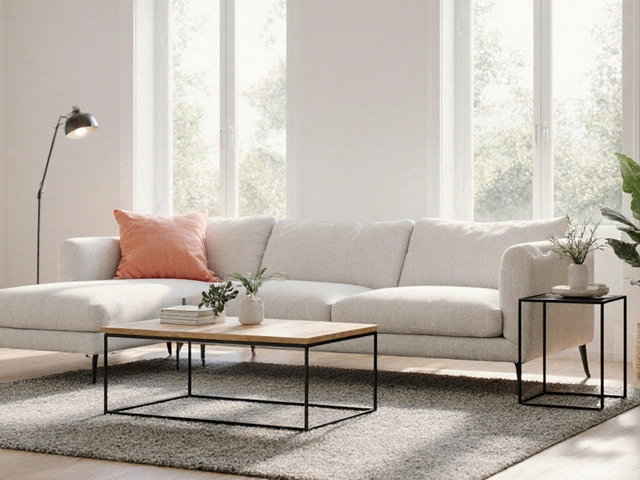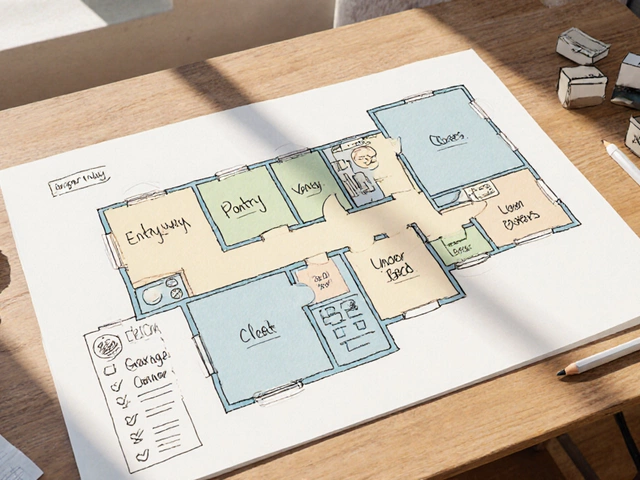Ever wondered how long your couch is meant to stick around? Well, it's more than just a piece of furniture; it's the heart of your living room, your lounging headquarters, and possibly even your napping sanctuary. On average, a good quality couch should last anywhere from 7 to 15 years. Seems like a wide range, right? That's because a lot depends on usage, quality, and some TLC (tender loving care).
Let's break it down a bit. High-traffic households, especially those with kids or pets, might find their couches wearing out faster. It's not just the family that affects the lifespan; the couch's material and construction play huge roles. Solid frames and quality fabrics mean better durability.
What you might not know is that couches start showing signs of aging well before they look like they belong in a junkyard. Sagging cushions, creaky sounds, or faded fabric are all hints that it might be time for a change.
But don't worry! There are ways to keep your trusted sofa around for a bit longer. Regular cleaning, fluffing the cushions, and rotating them can do wonders. And, when buying new, choosing materials that withstand your household's demands is a smart move. Stick around to learn more tricks and tips for couch care!
- Factors Influencing Couch Longevity
- When to Replace Your Couch
- Tips for Extending Couch Life
- Choosing a Durable Sofa
Factors Influencing Couch Longevity
So, what's behind the lifespan of a couch, really? There are several things to keep an eye on, and it's not just about how durable the couch looks when you first buy it.
1. Frame Construction
The backbone of any couch is its frame. Ideally, you want a frame that's made from kiln-dried hardwood like oak or walnut. Avoid softwoods like pine; they might be cheap, but they won't last as long. A sturdy frame lays the groundwork for years of reliable use.
2. Cushion Material
The next factor? Cushions. They should be supportive and comfy. High-density foam cushions wrapped in down or polyester batting are great. Low-density foam will start sagging pretty quickly, reducing the sofa's longevity.
3. Fabric Durability
Ever noticed the fabric being the first thing to give out? That's because it wears out fast if it's not durable. For high-traffic areas, go for performance fabrics like microfiber or leather. Fabrics with higher thread counts are generally more durable, too.
4. Frequency and Type of Use
How often you use your couch influences how long it will last. Couches in busy family homes might not last as long as ones in a quieter environment. Plus, if you've got a habit of using it as a trampoline, don’t expect it to last the full 15 years.
5. Environmental Factors
Believe it or not, where you place your couch matters. Proximity to windows where direct sunlight hits will fade the fabric over time. Nearby heaters can also dry out and crack leather or faux materials.
| Factor | Impact |
|---|---|
| Frame Material | 5-10 extra years with quality wood |
| Cushion Density | Maintains shape 3-7 years longer |
| Fabric Choice | Resists wear and tear by 30% |
The takeaway here? If you're aiming for a long-lasting couch, start with the basics: solid construction, quality materials, and mindful placement. Remember, the more care you put into your purchase, the longer you’ll have your couch sticking around!
When to Replace Your Couch
So, you've been living with your couch for a while, and you're starting to feel like it might be time for a change. But how do you know when it's really time to let go? There are a few clear signs to look out for that might indicate your precious piece of furniture's lifespan is reaching its end.
Signs of Wear and Tear
Your couch takes a lot of abuse—from kids, pets, and flowing conversations at parties. Look for obvious signs of wear like rips, stains, or sagging cushions that don't fluff back up. If you find yourself constantly shifting around to get comfortable, that might be a clue. A squeaky or unstable frame is another red flag.
Health and Comfort
If that old couch of yours is starting to affect your back or cause discomfort, it's definitely time to consider a swap. Sofas are meant to provide support. When they lose that ability, it impacts not just your relaxation but also your health.
Style and Functionality
Maybe your couch is still holding up fine, but it just looks dated. Style matters too! If it's clashing with your current decor or simply doesn't match your personal taste anymore, that can be reason enough. A change in needs, like the need for more seating space, can also prompt a replacement.
Age of the Couch
The age factor is impossible to ignore. If your couch is nearing that 7 to 15-year mark, it's living on borrowed time. Set a fair expectation based on the couch lifespan—if it's past its prime, start shopping around.
| Component | Expected Lifespan |
|---|---|
| Fabric | 3-5 years |
| Frame | 7-15 years |
| Cushions | 5-8 years |
Replacing your couch might feel like a big step, but when it no longer supports, comforts, or suits your style, it's likely the right time. Keep an eye on the sofa longevity signs and trust your comfort instincts.

Tips for Extending Couch Life
A couch is an investment, and with the right care, you can stretch its lifespan beyond the average. It's not rocket science, but a few practical steps can work wonders. Here are some handy tips to keep your couch lifespan on the longer side of the spectrum.
1. Regular Cleaning
Keeping your couch clean is the first step to maintaining it. Vacuum it regularly to remove dust and crumbs that can wear down the fabric. For spills, blot immediately with a clean cloth—never rub, as this can push the stain deeper into the fibers.
2. Cushion Care
Fluff your cushions often to keep them in shape. Rotate them if they're reversible; it helps wear them evenly. Sagging cushions can be rejuvenated by adding extra foam inserts or using batting to plump them up.
3. Fabric Protection
Consider using fabric protectors to shield your couch from spills and stains. They're especially handy for families with kids or pets, adding an extra layer of defense without affecting the sofa's feel.
4. Placement Matters
Place your couch away from direct sunlight, which can cause fading. If that's unavoidable, consider using blinds or curtains during peak hours. Also, keep it away from radiators and too-close proximity to heaters to prevent fabric damage.
5. Keep Pets in Check
We love our furry friends, but they can be tough on sofas. Train pets to stay off or cover your couch with a washable cover or blanket. Clip their nails regularly to prevent accidental scratches.
The table below shows a quick summary of how these tips contribute to extending a couch's lifespan:
| Tips | Lifespan Extension Benefit |
|---|---|
| Regular Cleaning | Protects fabric, reduces wear |
| Cushion Care | Prevents sagging, maintains shape |
| Fabric Protection | Guards against stains and spills |
| Placement | Prevents fading and heat damage |
| Pet Management | Reduces claw and fur damage |
Applying these simple strategies can help keep your couch looking fresh and comfortable for years to come. Remember, a little maintenance goes a long way in extending that sofa longevity. Happy lounging!
Choosing a Durable Sofa
Picking a couch is no small feat, especially when you want it to last more than a few years. So, how do you find one that's built to endure? First things first, focus on the couch lifespan. It'll guide you in assessing what truly withstands the test of time.
Look for Quality Materials
The foundation of a lasting couch lies in the materials. Solid hardwood frames, like oak or maple, top the list for durability. They may cost a bit more, but they'll hold up against roughhousing and daily wear better than softer woods or particle board.
Don't forget the upholstery! Leather is a classic choice known for its ruggedness and ability to age well. Alternatively, high-quality synthetic fabrics can resist stains as well as general wear and tear, making them great for families and pets.
Check the Construction
Now, let's talk construction. Look for eight-way hand-tied springs rather than the cheaper drop-in coil units. The former offers not just comfort but also longevity. Detachable and reversible seat cushions? Yes, please. They allow for even wear and easier cleaning or flipping to maintain that fresh look.
Pay Attention to Design
A durable sofa isn't just about materials. Its design matters too. Choose a timeless style with neutral colors that won't go out of fashion in a few years. You won't want to swap out your sturdy sofa just because it's caught in a decade-old trend.
Consider Your Lifestyle
Think about how your household operates daily. Big family gatherings or little ones bouncing around? Sectional couches might be practical, offering generous space and lasting durability if modular cushions eventually need replacing.
| Material | Expected Lifespan |
|---|---|
| Leather | 10-15 years |
| Synthetic Fabric | 7-10 years |
| Natural Fiber | 5-7 years |
Ultimately, a little extra homework when purchasing can greatly affect how long your sofa longevity extends. By understanding these elements, you'll be better equipped to make a choice that you'll be happy with for years to come.








